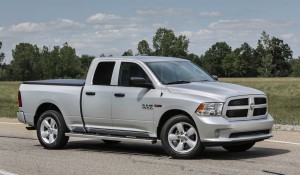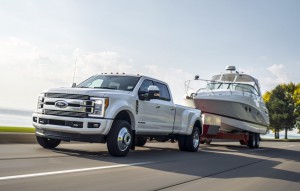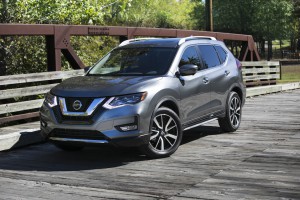With a 17% sales increase Fiat Chrysler helped industry sales hold steady in November as Ford Motor Co. Nissan, Toyota and Honda all reported drops in sales for the month.
Overall, full-year 2018 sales are on course to beat 2017’s results and pass the 17-million milestone for the fourth straight year, a record streak, according to Cox Automotive.
FCA’s sales were driven by the Jeep and Ram brands, which set a variety of records in total, retail and nameplate sales. Ram led FCA US brands with a 44% increase in vehicle sales.
FCA US retail sales in November rose 6% to 136,704 vehicles. It was the highest November retail sales since 2001 when sales reached 155,706 vehicles. Fleet sales totaled 44,606 vehicles.
“Our dealers saw steady customer traffic throughout the month and especially during the Thanksgiving weekend,” Head of U.S. Sales Reid Bigland said. “We were also honored when Motor Trend named the Jeep Wrangler as the 2019 SUV of the Year and the Ram 1500 as the 2019 Truck of the Year. The awards underscore the hard work our dealers and employees have done to make both of these vehicles a success.”
(North American Car, Truck and SUV of the Year finalists selected. Click Here for the story.)
Ford Motor Co. sales dropped 6.9% as a result of what the company described as a decline in daily rental sales due to order timing. Ford fleet sales were down 7.1% daily rental was down 32.7%, while commercial sales were up 11.8 %.
Ford’s F-Series marked a record nine straight months topping the 70,000 truck mark, a consistent performance by a high-volume, high-margin product unmatched in the industry.
“Sales of our all new Expedition and Transit Connect continue to grow, as does our mix of trucks, SUVs and vans,” said Mark LaNeve, Ford vice president of sales, service and marketing. “This mix totaled 82% in November boosting our transaction pricing to a new record of $37,000 per vehicle.”
Toyota Motor North America reported November sales of Toyota and Lexus dropped 0.6 % on a volume basis and a daily selling rate basis. Toyota sales fell 0.3 % on a volume basis and a DSR basis. Lexus posted fell 2.5% on a volume basis and a daily selling rate basis.
Sales by American Honda also fell by 9.5% despite a strong showing by Acura, which posted a 10.5% sales gain thanks to strong sales of utility vehicles. Sales by the Honda brand fell 11.6%.
(Click Here for more about Ford cutting production at plants, but shifting workers.)
While some Nissan models saw jumps, including the Murano up 13%, Frontier up 5% and Rogue up 2%, Nissan Group sales dropped 18.6% in November with Nissan brand sales, falling 21.6% and Infiniti dropping 8.1%.
General Motors no longer reports monthly sales figures but was expected to see its sales drop 4.5% during November, according to estimates by analysts.
Interest rates for new vehicles dipped slightly in November, according to the car shopping experts at Edmunds. The annual percentage rate on new financed vehicles averaged 6% in November, compared with 6.2% in October. Edmunds experts say that this month-over-month dip can be attributed to a bump in zero percent finance deals from automakers in November.
“Car buyers got a bit of relief this month thanks to Black Friday deals, but an average interest rate above 6% is still a tough pill to swallow, especially for shoppers who might be coming back to the market after a number of years,” said Jeremy Acevedo, Edmunds’ manager of industry analysis. “Shoppers who purchased a car in November five years ago could feasibly be facing a 47% increase in their interest rate this November.”
“There were mixed average transaction price results among automakers in November 2018, even though the industry average did rise 2%,” said Tim Fleming, analyst for Kelley Blue Book.
(Trump threatens GM with economic sanctions. Click Here for the story.)
“Much of the growth took place in the pickup truck and mid- to full-size SUV segments, highlighting affordability concerns in more mainstream small SUV and car categories. However, incentives are making up the difference. Incentives on car segments are falling as production declines, and rising in SUV segments where competition is growing, but the incentives-to-transaction price ratio is healthy at around 10%.”



